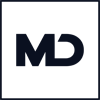404
This page doesn't exist
Funnel Vision
Learn from the best marketing entrepreneurs in the world.
Join 40k+ other amazing marketers, agency owners and entrepreneurs who subscribe to our weekly Funnel Vision Newsletter.


Join 40k+ other amazing marketers, agency owners and entrepreneurs who subscribe to our weekly Funnel Vision Newsletter.

